Near-end crosstalk is relatively easy to understand, but far-end crosstalk seems to be a little more difficult to understand due to its complex phenomena. This time, I dare to step into far-end crosstalk.
Please refer to the following related articles.
Near-end crosstalk and countermeasures
Backward crosstalk factor Kb and forward crosstalk factor Kf
Far-end crosstalk between surface and middle layers
The far-end crosstalk has different shapes between the surface layer and the middle layer. Figure 1(a) shows an example of far-end crosstalk in the hidden layer.
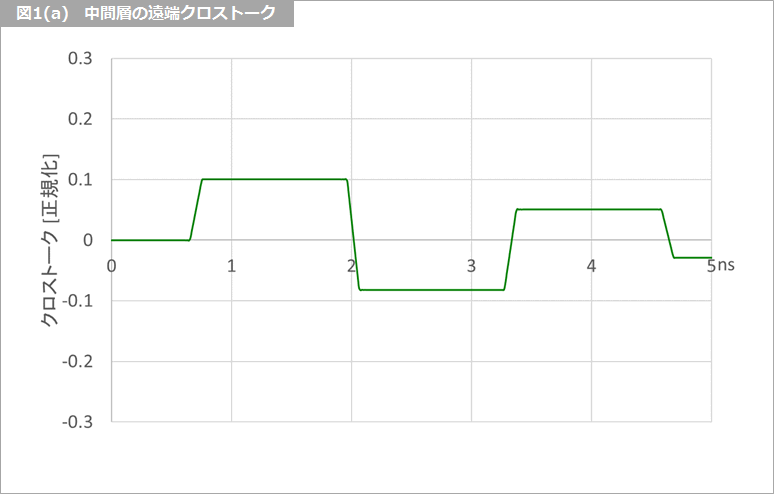
The shape of the crosstalk is similar to near-end crosstalk. This crosstalk is tentatively named "skeleton". Please note that this name is unique and not general. Figure 1(b) shows an example of far-end crosstalk on the surface layer. This is a form in which the whisker-like crosstalk in Fig. 1(c) is superimposed on the skeleton of Fig. 1(a), that is, (b) = (a) + (c).
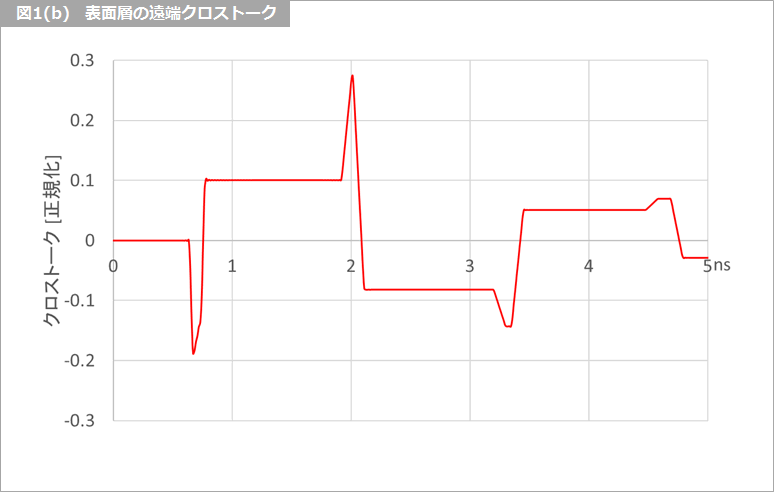
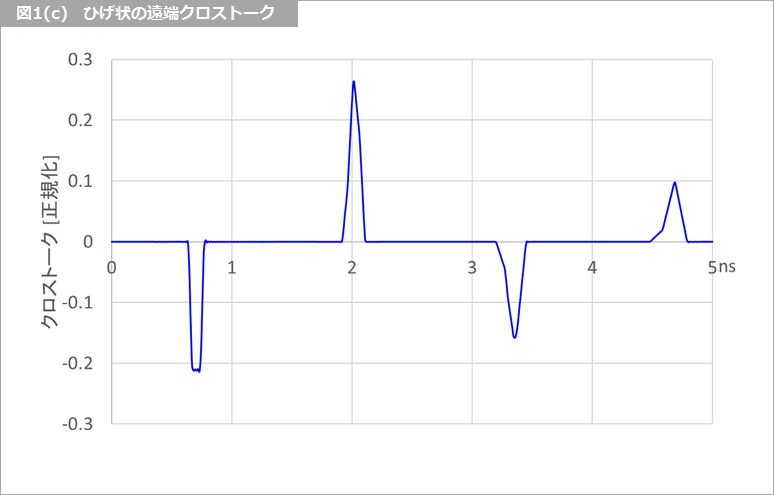
Skeleton and whiskers crosstalk
The skeletal part exhibits the characteristics shown in Fig. 5 of "Near-end crosstalk and countermeasures" against the drive capability of the driver. As mentioned in Backward Crosstalk Coefficient Kb and Forward Crosstalk Coefficient Kf, it can be zeroed by choosing the termination resistors R = √ZC x ZD. The whisker crosstalk is caused by the delay time difference Δτ between the two common and differential modes τC and τD. (τ: small Greek letter tau)
For whisker crosstalk, see Figure 4 in "Backward Crosstalk Coefficient Kb and Forward Crosstalk Coefficient Kf". It is also related to the rise time tr of the signal: when tr is less than Δτ, its peak is 1/4 of the signal, and when tr is greater than Δτ, it is inversely proportional to tr.
Arrangement is as follows.
- The skeletal part changes depending on the driving ability of the driver.
- Whiskers depend on τC, τD, tr
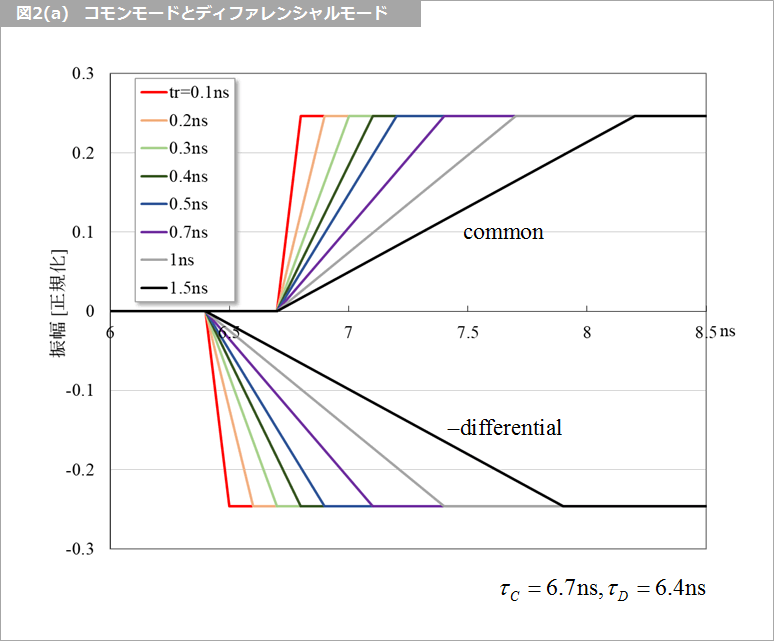
Figure 2(a) shows the common and differential waveforms when the signal rise time tr is varied. The amplitudes are 1/2 and 1/2 for common and 1/2 and -1/2 for differential, as in Figure 2 of Backward Crosstalk Coefficient Kb and Forward Crosstalk Coefficient Kf.
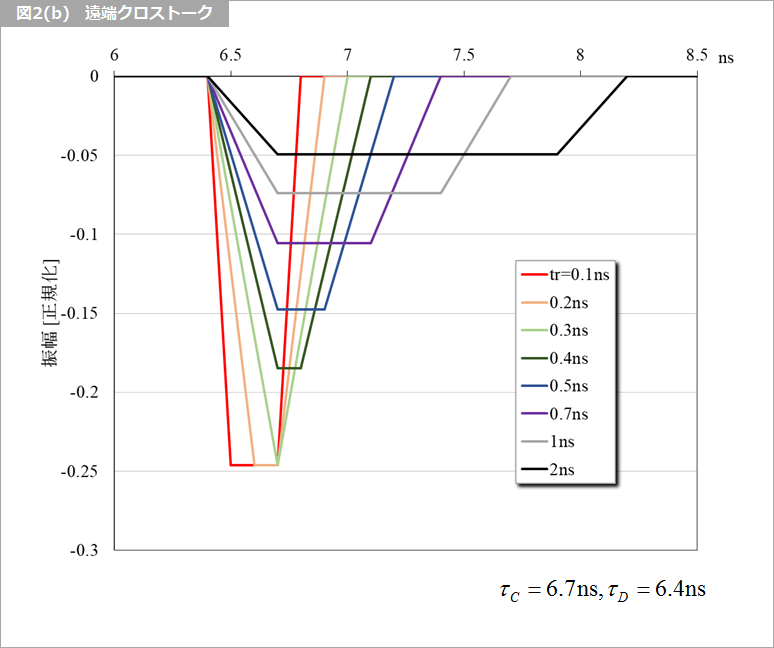
Figure 2(b) shows the waveform of the victim line of Figure 3 for the sum of the common and differential, ie, the backward crosstalk factor Kb and the forward crosstalk factor Kf. In this figure, the difference between τC and τD is 0.3ns, so far-end crosstalk is -0.25 below tr = 0.3ns. See also footnote 3 in "Backward Crosstalk Factor Kb and Forward Crosstalk Factor Kf".
Effect of load capacitance on whisker crosstalk
I said that far-end crosstalk in the intermediate layer does not occur only in the skeleton, but in fact, whiskers can occur due to near-end and far-end capacitance. The waveform becomes exponential due to the time constant due to the capacitance, characteristic impedance, and terminating resistance. Far-end whisker-like crosstalk is caused by the difference in delay time between common and differential. Therefore, the larger the characteristic impedance, the larger the time constant for the load capacitance, and the larger the delay. This difference in delay causes a difference in τC and τD, resulting in whisker crosstalk.
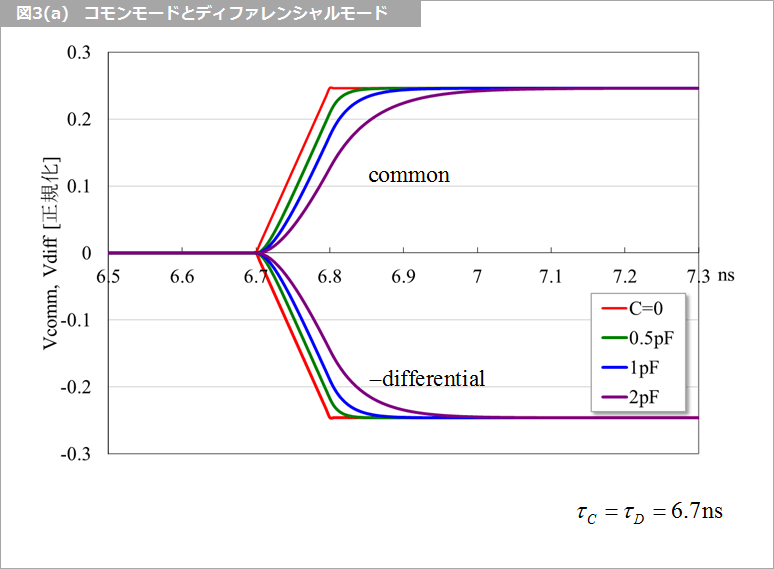
Figure 3(a) shows common and differential (negative) waveforms when the far end capacitance is varied. Although it looks vertically symmetrical, the sum of the two is as shown in Fig. 3(b), and a whisker-like far-end crosstalk occurs as if there is a difference between τC and τD. This is the same phenomenon as the capacitive characteristic of the exact solution (link) of differential crosstalk.
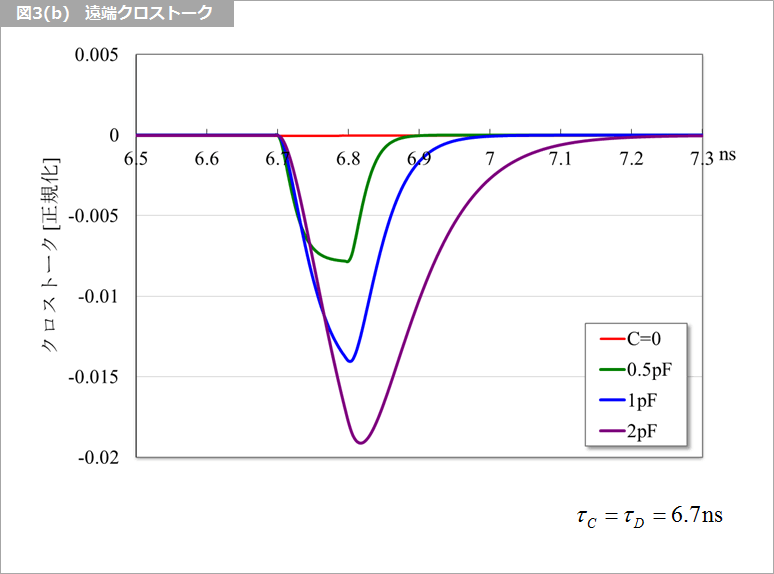
What is Yuzo Usui's Specialist Column?
It is a series of columns that start from the basics, include themes that you can't hear anymore, themes for beginners, and also a slightly advanced level, all will be described in as easy-to-understand terms as possible.
Maybe there are other themes that interest you!
